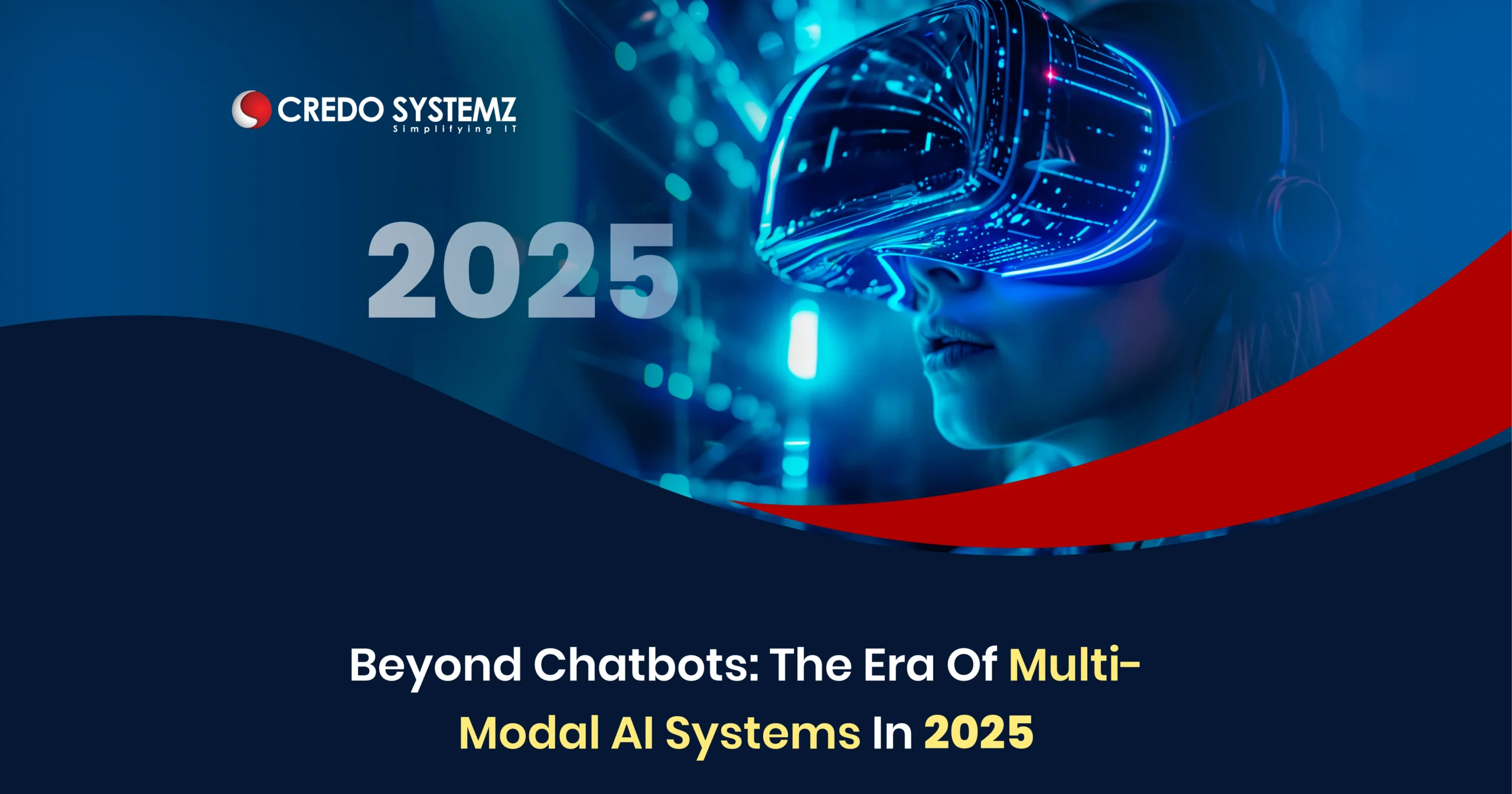
Introduction
A multimodal AI can ingest and reason across different data types like text, images, audio, video in one coherent model. They can fuse them into a single understanding and response.
Why 2024–25 feels like a turning point
The major model families moved from research demos into production-ready multimodal systems.
OpenAI’s GPT-4o ships native audio, vision and text capabilities with improved latency and cost characteristics. This brings real-time multimodal reasoning into APIs and products.
Google Gemini progressed through 2.0 → 2.5 releases that expanded multimodal inputs/outputs. This pushed very large context windows and latency-optimized variants for real-time apps.
Meta’s Llama family widened its footprint with Llama 3 and smaller vision-enabled variants optimized for edge and mobile uses.
Want to know more about the course curriculum, career counseling, or video references? Just ping us on WhatsApp!
Core technical trends powering the shift
In 2025, several engineering advances made multimodal systems practical, such as:
- Unified architectures: Transformers and cross-modal attention let models learn shared representations across text, pixels and waveforms.
- Huge context windows: Models handle extremely long contexts that enable multi-document and video-length reasoning.
- Latency and cost-optimized families: “Flash” / “Pro” / “Lite” model variants deliver multimodal capability at different price/latency points.
- Edge and on-device multimodals: smaller vision-LLMs make private, low-latency multimodal inference feasible on phones and appliances.
- Multimodal outputs: Models can produce images, formatted documents, and audio, which opens richer UX possibilities.
Join our exclusive WhatsApp group to get instant updates on career trends, training programs, and in-demand skills.
👉 Join here: Click to Join
Real-world use cases that changed in 2025
The real-time use cases of multimodal AI are:
- Smart document workflows: upload engineering PDFs, scanned invoices, get structured extractions, cross-referenced summaries, and runnable code snippets in one pass.
- Agentic assistants for operations: assistants that listen to a meeting, read related files, inspect uploaded screenshots, and then take multi-step actions.
- Customer support & multimodal triage: combine transcript analysis, user screenshots, and short screen recordings to automatically classify issues, propose fixes, and generate step-by-step visual guides.
- Creative production: image + text + audio models let creators iterate on storyboards, produce voiceovers, and generate assets in a tighter loop.
- Healthcare and field diagnostics: vision + text systems help triage images matched with patient history. Strict validation and regulatory work remain necessary before clinical deployment.
Practical engineering patterns
- Retriever + multimodal LLM: index images, audio transcripts and documents. Retrieve relevant chunks and feed them into a multimodal model for context-aware answers.
- Tooling + grounded outputs: combine model responses with deterministic tools to reduce hallucination.
- Hybrid on-device / cloud inference: run lightweight vision/text models on-device for privacy and latency that escalates harder multimodal reasoning to cloud models.
Business impact: why companies care in 2025
In 2025, analysts and consulting reports highlight real business value from multimodal systems which ensures faster document processing, better customer experiences, and new product classes. Early adopters gain measurable improvements in speed and CSAT. It makes multimodal a strategic capability rather than a niche experiment.
Conclusion
Finally, multimodal AI in 2025 is the practical step that turns assistants into full-scope collaborators. They read reports, look at images, listen to audio, and take multi-step actions. The technology is a new platform layer that creates enormous product opportunity, but also demands disciplined engineering and governance. Learning to fuse modalities responsibly will shape the next decade of AI-native products by joining Credo Systemz AI courses.

Join Credo Systemz Software Courses in Chennai at Credo Systemz OMR, Credo Systemz Velachery to kick-start or uplift your career path.
Multimodal AI – FAQ
Image generation is one multimodal capability and core multimodal systems understand images, audio, text together and can reason across them.
Yes, many providers now offer production-grade multimodal APIs and tuned model families, but deployment requires careful engineering around latency, privacy, grounding, and domain validation.
Hybrid. Use on-device models for privacy/latency-sensitive tasks and cloud models for heavy reasoning or creative generation. Recent releases explicitly target both ends of that spectrum.
